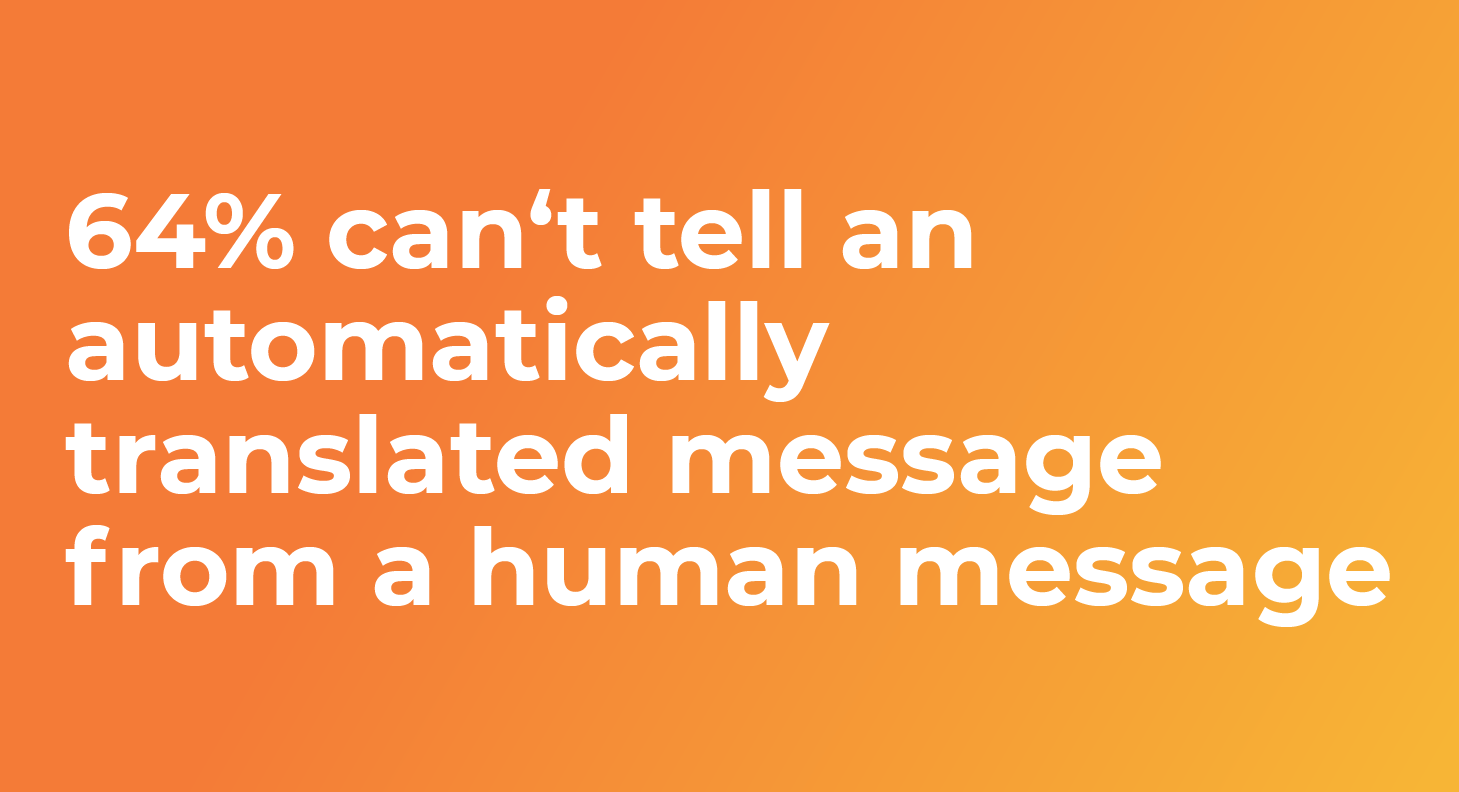Customers expect help in their own language
English, Chinese, Arab, Russian, Spanish, Portuguese, German… the list of languages with over a hundred million speakers is not small. All of them have a great business relevance for the brands that are operating in their respective markets.
But a customer-centric approach looks very different. Each customer wants to communicate in his native language. How can brands accommodate every customer language? While an answer usually involves semi-automated translations, the solution starts with recognizing the problem.
Online customers come from anywhere in the world

English is the language of the internet. The language you need if you want to have an online presence. But even if it’s the most important customer language, it’s not what most people use to search. In fact, it’s not even the language in which most users think (yes, that would probably be Mandarin).
Every year it becomes increasingly important to communicate with customers in the terms that they prefer, and that includes communicating in the language in which they are most comfortable. Just like companies are making enormous efforts to provide an omnichannel experience, the best players out there are also generating omnilanguage interactions at every stage of the customer journey, from product discovery to after sales support.

That means that if a company manages to have truly global presence, over 50% of its web visitors will come from a handful of countries: China, India, Indonesia, Japan…
But too many global actors fail to recognize this simple reality. And there’s a reason for that. More often than not, the profile of the average buyer of a Western company will be a bit different than that. Western, way more Anglo. The simple reason is that they are not converting their international traffic.
Or the other way around… only 21% of companies can afford to provide their website and support in a single language.
If you’re not in that lucky percentage, a multilingual approach should be an essential component of your growth strategy.
And if the CEO tries to deny it, you can show him our next stat:
Language is key in online purchases
Now it makes sense, doesn’t it? You may be getting 100k unique visitors to your site, but if your content is only in English, you will see great conversion rates from the UK, US, Australia… and terrible ones from Indonesia. Even if your target audience has a great fit in the country of the Komodo dragon.
The buying experience must be localized. Unless you don’t care about losing that 40% of potential customers.
Of course, some industries are more sensitive than others, and that percentage will fluctuate accordingly. But it’s important to realize the implications of localizing every step in the customer journey. Once a person from Poland starts browsing your electronics e-commerce in Polish, she will expect to interact in Polish with your team if there is every a need for it.
Now imagine that this Polish visitor becomes a customer, but then has a connectivity issue with her accessory. How happy will she be when she finds out she can’t describe her problem in Polish?
After an awkward call in broken English about complicated electrotechnical concepts, our imaginary Polish customer will probably not buy again from your site.
One third of businesses know that they have been in that situation. They have failed to deliver the omnilingual experience that their customers expected.
It’s easy to imagine that many businesses ignore the overall size of the opportunities that they’re losing, particularly considering the growth potential for their bran.
Unfortunately, losing customers because they can’t be supported in their languages is often seen as an easy trade-off. Company owners tend to think that the cost of providing multilingual support is much higher than its benefits.
What’s a smarter way to grow? Win new customers over and over, or delight them so that they come back?
With multilingual support, it’s much easier to create recurring purchases from the same happy customers.
… Or at least, that’s what they think.
Companies usually consider only two multilingual strategies:
- Hire an external service to provide either the multilingual agents or the translation services. Both options are quite costly, and the translation services add a delay to every communication.
- Hire bilingual or multilingual agents so that every customer language is covered. This strategy is expensive, inefficient, and also extremely slow. Finding good multilingual agents is hard. Retaining them is even harder.
Building a team of multilingual agents that master every non-primary language your customers may contact you in is an impossible mission.
Finding every agent required in the team will take a long time. While the team is incomplete, your performance will be mediocre.
But keeping agents motivated will also be extremely difficult. For languages with low volumes, agents will be bored, with insufficient work arriving to them. But agents covering common languages will be flooded with customer problems.
Both approaches lead to burnout and inefficiency.
Automatic translations are on the rise
Leading global companies are using a hybrid approach to multilingual support that combines great support specialists with automated or semi-automated translations.
Over the last years, automatic translations powered with machine learning engines have increased their accuracy at an incredible speed.
And there are many signs that they the general public is ready to accept them.

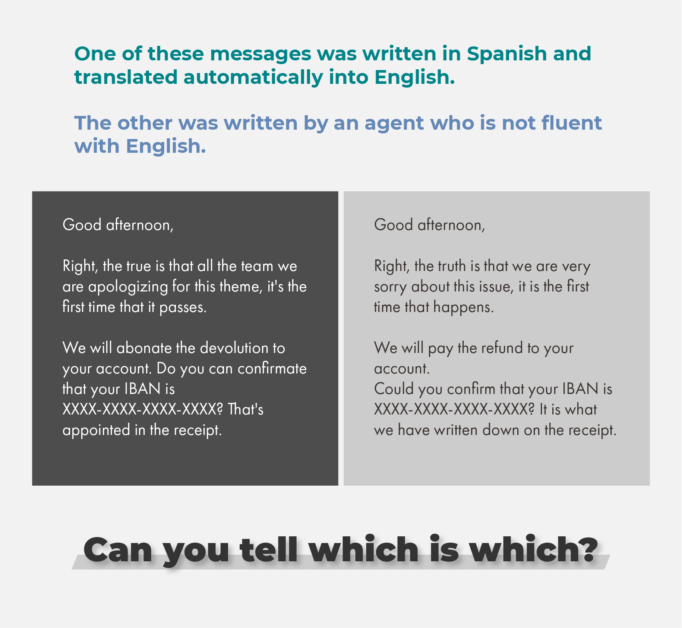
Automated translations already pass the Turing test: Most people can’t tell they’re reading a translated message.
We actually made the test in a survey to over 200 professionals. We showed them two messages in English.
- One message had been written in Spanish by an agent and translated into English with Google Translate
- The other message had been written in English by a Spanish agent with an intermediate level of English.
For each of the messages we made the same question: Is this message an automated translation or a message from a non-fluent agent?
Over 60% of the respondents could not spot the automatic translation. Did you guess right?
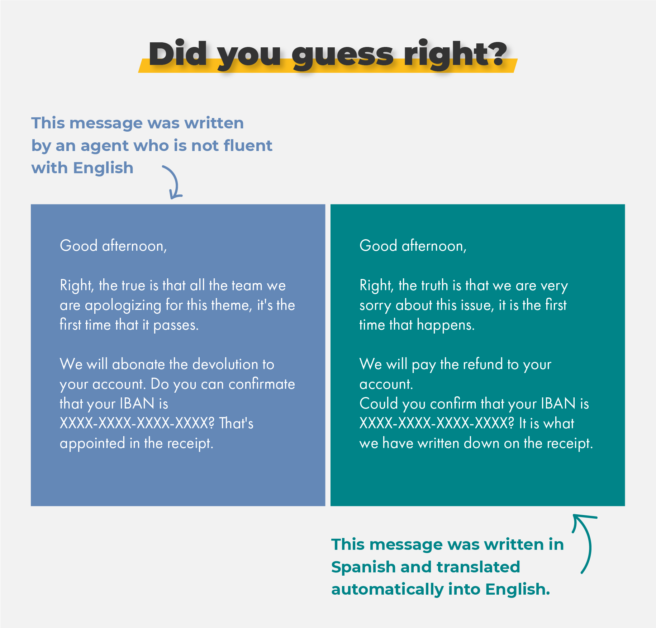

The fact is that simple communication in very specific contexts is already translated really well with engines like DeepL or Google Translate. I wouldn’t recommend it for poetry or long essays, but customer support is a really good domain where AI translations already are making an entrance as a mature technology.

In our research, there were clear trends. The better a person masters a foreign language, the more it’s willing to accept that the quality of software translations is very high.
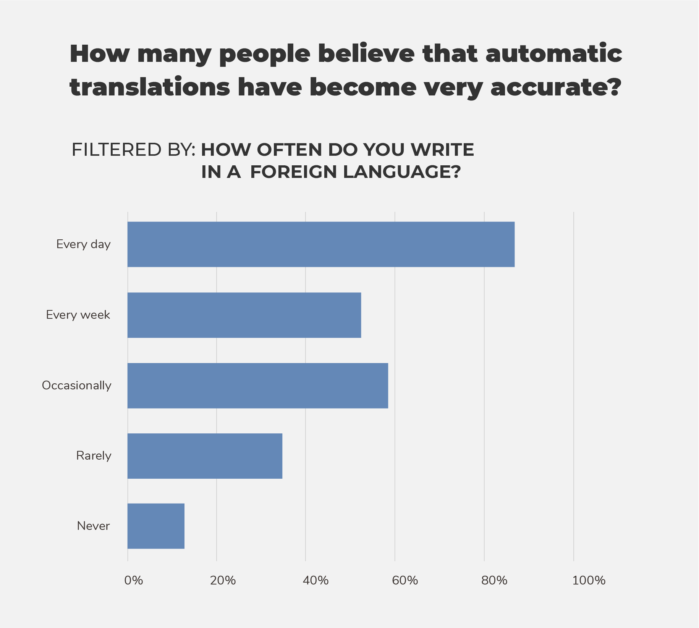
But age is surely the clearest of those trends. Younger generations are really inclined at working with automatic translations in their everyday lives. For people 60 and over, it still feels wrong.
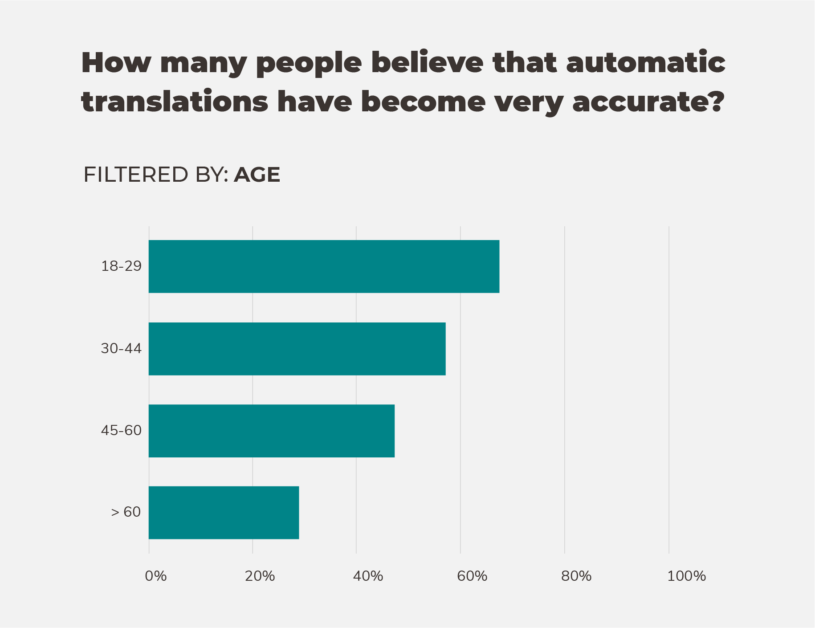
But it’s just a matter of time until it becomes an accepted practice.
In a 2016 report, the most popular way to support non-primary languages was through in-house bilingual or multilingual agents (almost 50%), with OPI (third parties over the phone) being also present at almost a 40% of the companies.
Free translation tools and more costly translation software, like the solutions provided by Lionbridge, was still relatively marginal, not reaching a 20%.
Early adopters of translation technology are already reaping the benefits of high quality support that scales better and is more cost-effective. Many companies are starting to follow and will join the movement in 2021 as they realize that translated support makes more of their customer happy, faster.
The journey to Automated Multilingual Support for IT Managers
A multilingual service desk or help desk based on multilingual agents is expensive and inefficient. An omnilingual service desk without translation software is simply… impossible. At some point you will have customers who expect to communicate in languages you can’t cover.
The top 10% of Help Desks with omnilingual capabilities don’t stand on support heroics, impossible shifts, and frustrated experts. They stand on scalable processes that combine the best of automated translation software and excellent talent in a hybrid approach to support.
Managers keep looking the other way while agents talk on the phone and reply to customer requests in multiple languages.
It makes no sense to provide multilingual support without measuring quality and customer satisfaction. Your primary language should be the benchmark for excellence, but it should be no excuse for deeply granular analytics on your international customers.
Some great examples of multilingual insights:
- Volume of tickets per language

- SLA compliance by language

- Tickets by product type

These reports have been created in Jira Service Management, simply by adding filters with the customer language and key phrase custom field featured in resolution’s Language Translation app.

This insight comes from a combination of sources. According to ICMI, the 9 industries with the most pressure to provide multilingual support are Automotive, Banking, Government, Healthcare, Insurance, Retail, Software, and Telecom.
But while customers feel very inclined to be helped through automated translations in e-commerce, including hotel and flight bookings, some other industries still are evaluated as too sensitive to leave room for any possible inaccuracies. Finance, Healthcare, but also Legal Services are high in that list of delicate activities.
